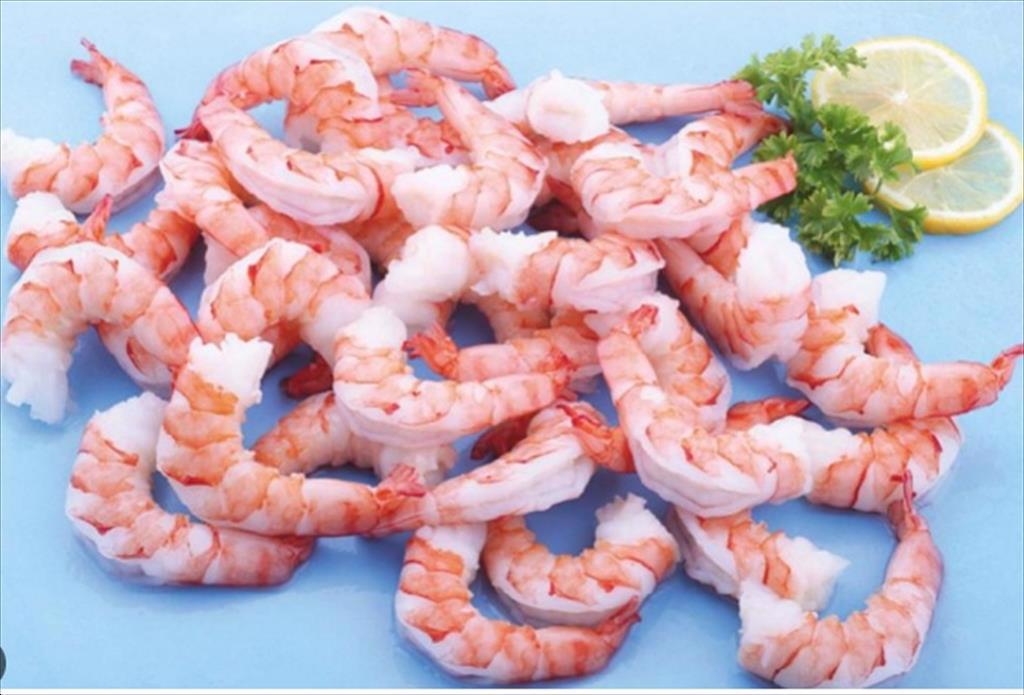(seafood.vasep.com.vn) In January 2025, Vietnam's total seafood export value reached 774.3 million USD, a 3.3% increase compared to the same period in 2024. This is a positive result compared to January 2023, when the Lunar New Year fell at the end of the month, significantly impacting export outcomes.
Shrimp – prices recover in the EU and U.S., but may decline in China
Shrimp continued to be the strongest-growing product in January 2025, with export value reaching 273.349 million USD, accounting for 35.3% of total seafood exports. Reports from Rabobank indicate that the global shrimp industry is in a phase of rebalancing, as producing countries slow down production growth to narrow the supply-demand gap. This is expected to help shrimp prices gradually recover in the first half of 2025, especially as demand from markets like the U.S. and EU improves.
However, the Chinese market, one of Vietnam’s largest shrimp partners, is facing a decline in consumption. Changes in the spending habits of the middle class, along with increased income pressure, have led to reduced consumption of white shrimp, particularly in large cities. Competition from cheaper seafood products and a preference for other food items may impact shrimp exports to China in the coming months.

Pangasius – Challenges from supply and tariff policies
Vietnamese pangasius continues to face difficulties in the first month of 2025, despite strong price growth due to limited supply. While demand from markets like China and the EU remains stable, shortages of fingerlings and fluctuations in international tariffs, especially anti-dumping measures, may negatively affect pangasius export growth this year.
The limited supply of pangasius, combined with market volatility, could lead to increased export value in the short term. However, the shortage of raw materials and changes in tariff policies may create a challenging environment for the pangasius sector in the near future.
Tuna – Potential from tariff policies and enhanced innovation
Vietnam’s tuna industry saw a 10.2% decrease in exports in January 2025. However, with stable demand for tuna products in markets like the U.S. and EU, the tuna sector is expected to have opportunities for recovery in 2025. The biggest opportunity comes from changes in tariff policies in major markets, especially in the U.S., where tariffs could make Vietnamese tuna products more competitive compared to other imported goods.
However, the tuna industry still faces many issues that need to be addressed to drive further growth. Fishermen need incentives to comply with legal regulations, including IUU (illegal, unreported, and unregulated fishing), and reinvest in deep-sea fishing. For businesses, there is a need to continue reviewing and improving the processes and procedures for issuing S/C and C/C certificates to resolve past issues. Additionally, the tuna industry should focus on developing sustainable production models and expanding markets through product quality improvement and cooperation with other countries for effective offshore fishing.
Export markets
Vietnam’s export markets show significant disparities in consumption trends. While China and Hong Kong experienced strong growth with a 64.9% increase, the U.S. and EU markets struggled, with declines of 16.0% and 17.6%, respectively.
The decline in U.S. consumption, due to President Donald Trump’s tariffs on imported seafood, may affect demand for Vietnamese seafood products, especially shrimp and salmon. However, the rising demand for easily processed seafood products, such as frozen shrimp, may help offset the decline in consumption of premium products.
Meanwhile, the ASEAN market recorded steady growth with a 10.5% increase, indicating that Southeast Asia remains a bright spot for Vietnam’s seafood exports. The Middle East and other markets experienced a decline in consumption, requiring Vietnamese seafood companies to adjust their export strategies accordingly.
Forecast
In 2025, the global seafood market is expected to experience significant volatility, with factors such as changing consumer habits, tariff policies, and supply-demand fluctuations affecting Vietnam’s seafood exports. Particularly, the decline in demand in major markets like China and the U.S. will pose significant challenges for products such as shrimp, pangasius, and tuna.
However, with increased demand from ASEAN markets and supportive tariff policies from major countries, Vietnam’s seafood industry can maintain its growth trajectory in 2025. Developing value-added products, improving product quality, and expanding into new export markets will be key to ensuring the sustainable development of Vietnam’s seafood industry in the future.